Fall is here at Nachusa Grasslands in Franklin Grove. Despite the warmer-than-normal temperatures, the dry rustling of tall grasses and prairie plants signal to visitors like me that peak summer flower season is winding down.
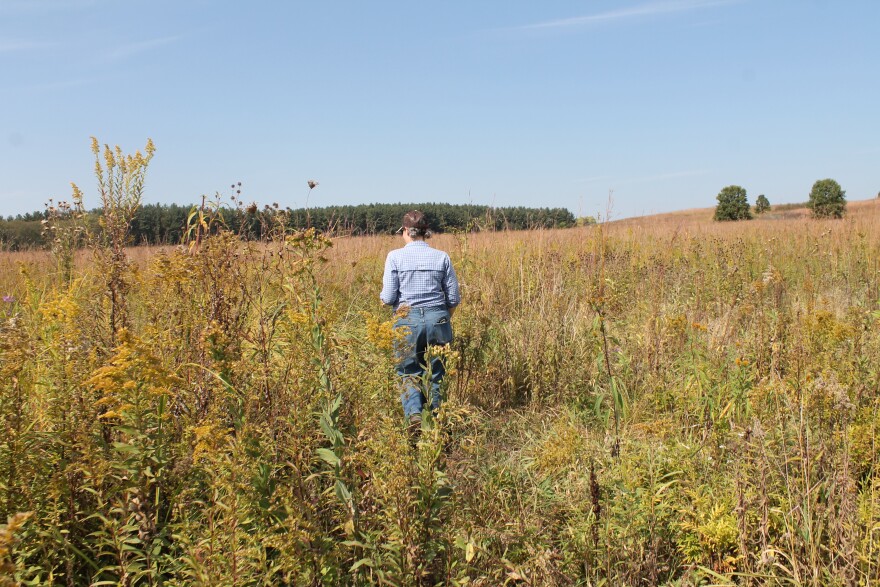
But, there are still a few key late season flowers offering a pollen treat to native bees in this 4,000 acre prairie. Warm yellow goldenrod and bright purple and white clusters of heath aster make for an excellent pollination opportunity.
Elizabeth Bach is an ecosystem restoration scientist at the preserve. She pointed out which flowers are past their prime this late in the season.
”The flowers have kind of faded, but it hasn't quite gone to seed yet," she said. "Maybe last week or two weeks ago, the bees would have been all over that one. And now this week, the heath aster is blooming. The bees are all over the heath aster.”
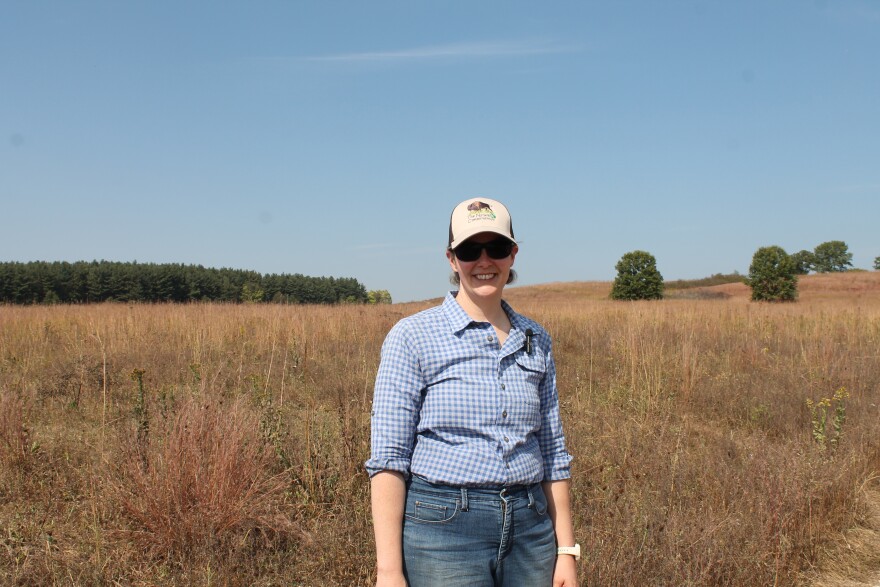
While a healthy ecosystem has a wide variety of plant species, they also need to bloom at different times of year. Bach refers to this as temporal diversity.
"There's this sense of temporal diversity as much as there is the spatial diversity," Bach said. "When we're doing restorations at a place like Nachusa Grasslands, we're thinking about having food [for the bees] during the whole year.”
Nachusa Grasslands is a remnant prairie, which means most parts of it have never been plowed or used for agriculture. That’s because its sandy soils weren’t quite conducive to productive crops. Bach said she loves that prairie ecosystems are, in her words, “subtle.”
“The more you get to know them," she said, "the more you love them. I love that they're so intricate. There's so many parts coming together."
This place is one of the rare instances in Illinois where visitors can look to every horizon and see only prairie landscape.
It's home to nearly 280 native bee species. That’s more than half of the species you'll find in this region.
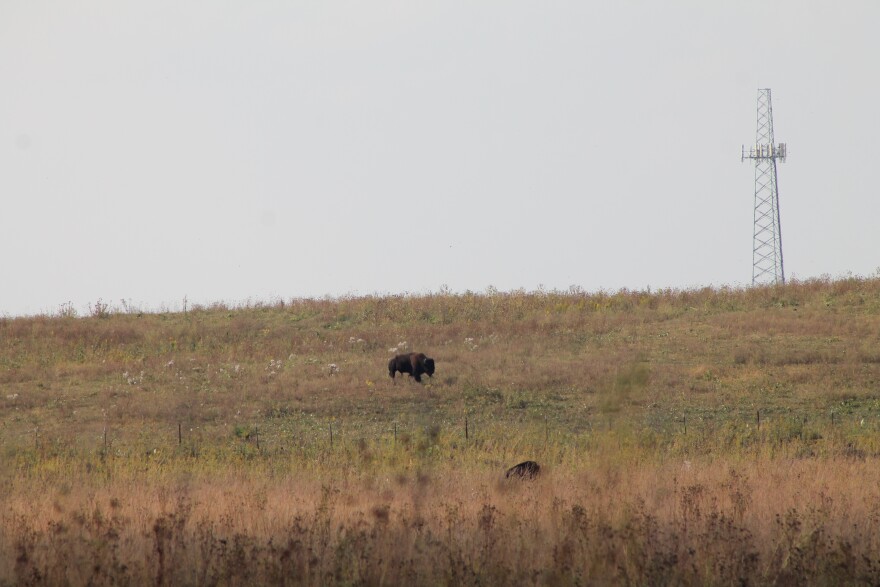
It’s also home to about 100 bison. They were reintroduced a decade ago and have shaped the prairie into what it is today.
Bach noted that prairies and humans have evolved side by side. Indigenous people managed prairies through controlled burns, and grazing bison kept the landscape managed as well.
“You can't take humans out of prairies," she said. The prairies won't thrive that way. I've increasingly learned to respect that role and understand that relationship. That being said, humans have very limited control.”
Prairies are a complex system of relationships and interactions. That brings us back to the bees.
One of the best examples: bison like to roll on the ground and scratch their sides and back. This creates bare patches of ground called wallows, perfect for solitary native bees to start excavating and creating their winter burrows this time of year. They dig out their singular tunnel using their legs and mouth parts.
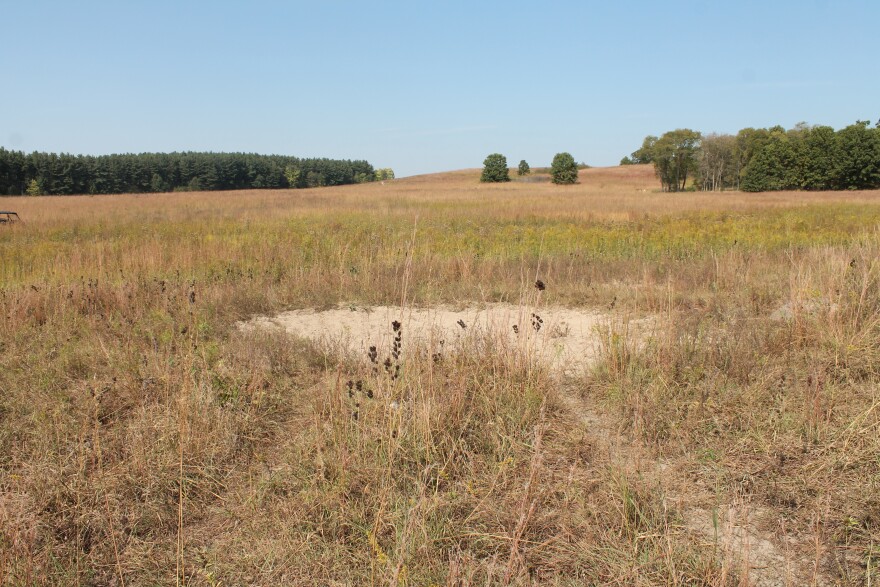
In late September, Bach said, these wallows were literally humming with activity.
The remnant prairie is a research site as well. Dr. Bethanne Bruninga-Socolar has been studying pollinator populations at Nachusa for a decade. She studies the mechanics of bee decision making in a habitat like this.
"I've been quite interested," she said, "in trying to understand, at a very small scale, how do bees make those, kind of, individual level decisions about how they're foraging. And what those implications might be for plant reproduction.”
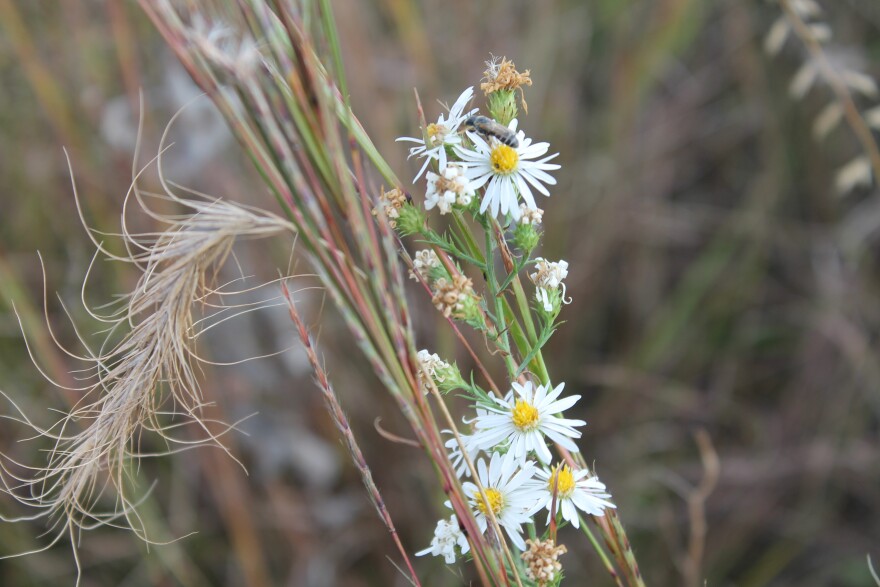
Nachusa is special because it’s so large and has such a variety of plants. Bruninga-Socolar's research shows this quality makes for an especially diverse variety of bee species at the preserve.
"You really need to have a landscape approach, I would argue, like Nachusa has," Bruninga-Socolar said. "There's a lot of things that make Nachusa really special, but from the bee community standpoint, just the fact that it is large and is able to encapsulate several different habitat types is what gives us the high diversity that we have of bees.”
Even though it’s a pretty quiet afternoon in the prairie, the pollinators are busy. One bright green bee wiggles its way into a tiny hole in the bison wallow.
'Til next spring!

